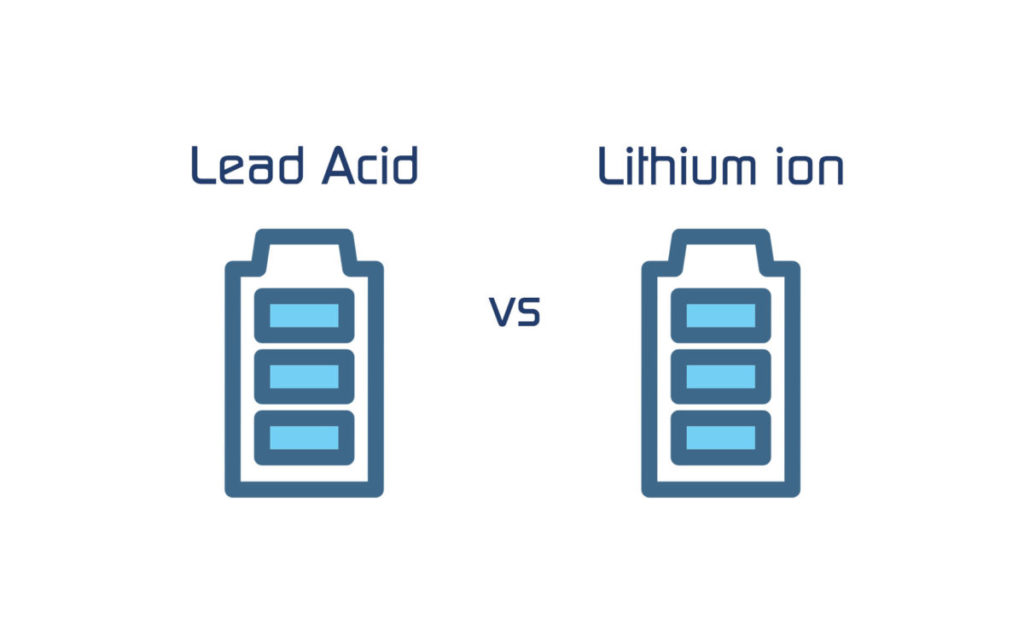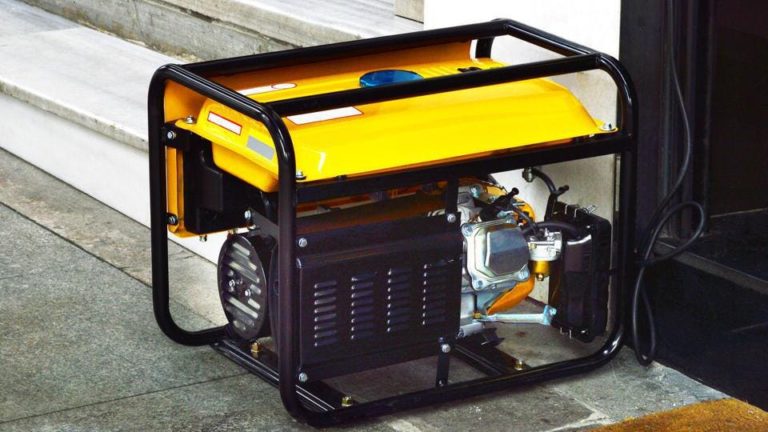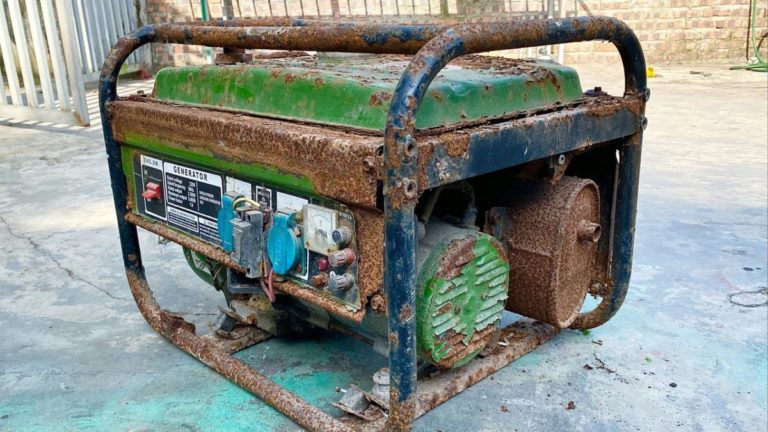Lithium ion (Li-ion) and lead acid batteries are two popular options for powering off-grid renewable energy systems.
While both types of batteries have their own strengths and weaknesses, choosing the right one for your system can be a challenging task.
We’ll explore the key differences between Li-ion and lead acid batteries to help you make an informed decision on which is best suited for your off-grid setup.
From cost and efficiency to lifespan and maintenance, we’ll dive into the important factors that can impact the performance of your renewable energy system.
Energy Density
Lithium-ion batteries have a higher energy density, meaning they can store more energy per unit of weight and volume. This is beneficial for off-grid systems where space and weight are important factors.
With their ability to store more energy per unit of weight and volume, lithium-ion batteries provide a more efficient and compact solution for off-grid energy storage.
This is especially important for renewable energy systems, such as solar and wind power, which often have limited space and weight constraints.
Lithium-ion batteries have a longer lifespan and faster charging times, making them a more reliable and practical choice for off-grid energy storage.
By selecting lithium-ion batteries for their off-grid systems, users can ensure a more efficient, compact, and reliable energy storage solution that meets their needs and preferences.
Life Cycle
Lithium-ion batteries have a longer lifespan and can last up to 15 years with proper maintenance. Lead Acid batteries, on the other hand, typically last for 5-7 years.
Looking for a reliable and long-lasting battery solution for your renewable energy system?
Look no further than lithium-ion batteries!
Unlike lead acid batteries, which typically last for only 5-7 years, lithium-ion batteries have a significantly longer lifespan, often lasting up to 15 years with proper maintenance.
This extended lifespan means that you’ll enjoy a more stable and reliable energy supply, as well as reduced maintenance and replacement costs.
Plus, lithium-ion batteries are more energy-dense and have a faster charge and discharge rate, making them ideal for high-power applications.
With proper care and maintenance, you can enjoy all the benefits of lithium-ion batteries for a longer period, making them an excellent investment for your renewable energy system.
Make the switch to lithium-ion batteries today and experience the difference for yourself!
Self-Discharge
Lithium-ion batteries have a lower self-discharge rate, which means they will maintain their charge longer when not in use. Lead Acid batteries, by contrast, lose their charge more quickly.
Lithium-ion batteries offer a distinct advantage over Lead Acid batteries when it comes to maintaining their charge over time.
With a lower self-discharge rate, Lithium-ion batteries are able to retain their charge significantly longer when not in use.
This means that when you need to store your battery for an extended period, Lithium-ion batteries will be able to maintain their charge for up to 6 months or more, while Lead Acid batteries will lose their charge much more quickly, often within a few weeks.
This makes Lithium-ion batteries an excellent choice for off-grid energy storage systems, electric vehicles, and other applications where the battery needs to be stored for long periods of time.
In addition, the lower self-discharge rate of Lithium-ion batteries means that they can be deep-cycled more times than Lead Acid batteries, providing a longer lifespan and more reliable performance.
Maintenance
Lithium-ion batteries require little to no maintenance, while Lead Acid batteries require regular maintenance, such as checking the water level and equalizing the cells.
Lithium-ion batteries offer a significant advantage over Lead Acid batteries in terms of maintenance requirements.
Unlike Lead Acid batteries, which require regular maintenance to ensure optimal performance, Lithium-ion batteries require little to no maintenance.
This is because Lithium-ion batteries are sealed units that do not vent gases or lose water, eliminating the need for regular checks and adjustments.
As a result, you can enjoy a hassle-free and reliable power backup system with Lithium-ion batteries.
On the other hand, Lead Acid batteries require regular maintenance to ensure that they perform optimally.
This includes checking the water level and equalizing the cells to maintain a balance of charge and prevent damage to the battery.
Regular maintenance also helps to prolong the life of the battery and prevent premature failure.
In contrast, Lithium-ion batteries do not require any maintenance beyond occasional inspection to ensure that the battery is properly charged and discharged.
Charging and Discharging Rates
Lithium-ion batteries can charge and discharge faster than Lead Acid batteries. This is important for off-grid systems where rapid charging and discharging may be necessary.
Lithium-ion batteries offer a significant advantage over Lead Acid batteries in terms of charging and discharging speed.
Lithium-ion batteries can charge and discharge faster than Lead Acid batteries, which is particularly important for off-grid systems where rapid charging and discharging may be necessary.
This is because Lithium-ion batteries have a higher energy density and a lower internal resistance, which allows them to charge and discharge more quickly and efficiently.
For example, a Lithium-ion battery can charge to 80% of its capacity in just 30 minutes, while a Lead Acid battery might take several hours to reach the same level of charge.
Similarly, Lithium-ion batteries can discharge faster than Lead Acid batteries, which is important for applications where high power demand is required, such as in electric vehicles or renewable energy systems.
Overall, the faster charging and discharging capabilities of Lithium-ion batteries make them a superior choice for off-grid systems where rapid charging and discharging may be necessary.
Cost
Lead Acid batteries are generally less expensive than Lithium-ion batteries, but the overall cost of the system should also include the cost of maintenance, replacement, and disposal.
Lead Acid batteries are often considered the more affordable option compared to Lithium-ion batteries.
However, the overall cost of the system should not solely be based on the upfront cost of the batteries.
Maintenance, replacement, and disposal costs should also be taken into account.
Lead Acid batteries require regular maintenance, such as checking and maintaining the acid level, which can be time-consuming and costly.
They also have a shorter lifespan compared to Lithium-ion batteries, which means they may need to be replaced more frequently.
Disposal of Lead Acid batteries can be environmentally harmful and costly.
In contrast, Lithium-ion batteries have a longer lifespan and require less maintenance, making them a more cost-effective option in the long run.
Therefore, while Lead Acid batteries may be less expensive upfront, the overall cost of the system should consider the long-term costs of maintenance, replacement, and disposal.
Recyclability
Lithium-ion batteries are more difficult to recycle than Lead Acid batteries, which can be recycled and reused.
Lithium-ion batteries, widely used in portable electronics and electric vehicles, pose a significant recycling challenge.
Unlike Lead Acid batteries, which can be easily recycled and reused, Lithium-ion batteries are more difficult to recycle due to their complex composition and the lack of established recycling processes.
The recycling of Lithium-ion batteries is hindered by several factors, such as the difficulty in separating the different components of the battery, including the cobalt, nickel, and graphite, as well as the potential for explosive reactions during the recycling process.
The high cost of recycling and the limited availability of specialized recycling facilities further compound the issue.
In contrast, Lead Acid batteries are much easier to recycle, with established processes for recovering lead, acid, and plastic components.
This makes Lead Acid batteries a more sustainable choice for applications where recyclability is a concern.
Depth of Discharge
Lithium-ion batteries can be discharged deeper than Lead Acid batteries without damaging the battery. This means that Lithium-ion batteries can provide more power for a longer period of time before needing to be recharged.
Lithium-ion batteries possess a significant advantage over Lead Acid batteries when it comes to deep discharges.
Unlike Lead Acid batteries, Lithium-ion batteries can be discharged much deeper without suffering any permanent damage.
In fact, Lithium-ion batteries can be discharged up to 80% of their capacity without any degradation, while Lead Acid batteries can only handle a maximum depth of discharge of around 50% before suffering permanent damage.
This means that Lithium-ion batteries can provide more power for a longer period of time before needing to be recharged, making them an ideal choice for applications that require long-lasting power, such as electric vehicles and portable electronics.
The deeper discharge capabilities of Lithium-ion batteries also make them more efficient, as they can provide more energy per unit of weight and volume compared to Lead Acid batteries.
Overall, the ability of Lithium-ion batteries to handle deep discharges without damage sets them apart from Lead Acid batteries and makes them a superior choice for many applications.
Want More? Dive Deeper Here!
Hey there! If you’re the type who loves going down the rabbit hole of information (like we do), you’re in the right spot. We’ve pulled together some cool reads and resources that dive a bit deeper into the stuff we chat about on our site. Whether you’re just killing time or super into the topic, these picks might just be what you’re looking for. Happy reading!
- 9.2. Battery storage | EME 812: Utility Solar Power and Concentration
- (PDF) The 3 Best Batteries For An Off-Grid Energy System | Kingsley Obiakor – Academia.edu
- Do solar panels and home batteries save energy?
- Professor Robert B. Laughlin, Department of Physics, Stanford University
- Making renewable power more viable for the grid | MIT News | Massachusetts Institute of Technology






